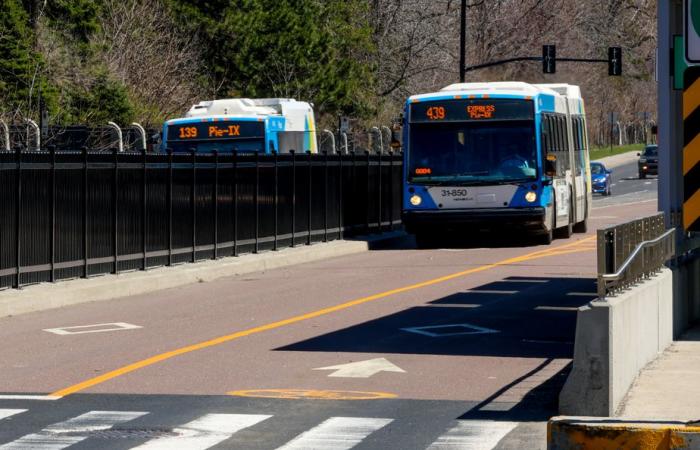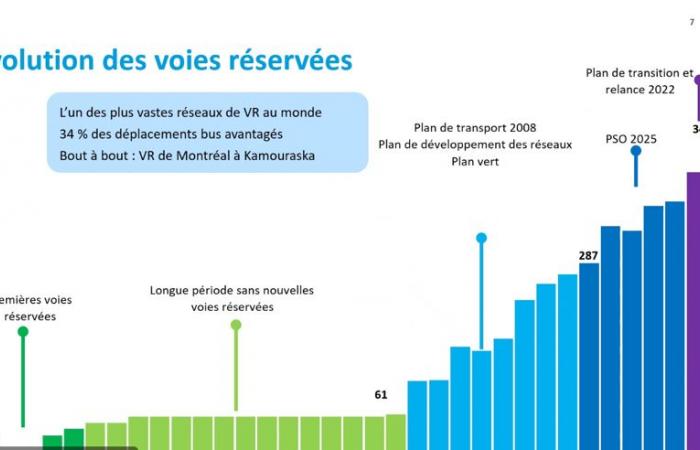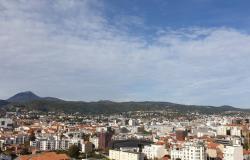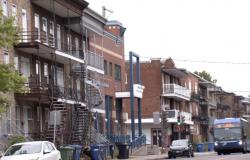With nearly 350 kilometers, the Société de transport de Montréal (STM) has one of the largest networks of lanes reserved for buses in the world. And the carrier does not intend to stop there: it aims to go from a third to half of the trips benefiting from these unique corridors.
Published at 10:35 a.m.
“It will continue to increase, but in targeted locations. We are really starting to have a good framework,” indicated Wednesday the director of planning and network management of the STM, Michel Tremblay, during a technical briefing on preferential bus measures (MPB).
So far, there are 347 kilometers of reserved lanes in Montreal. A third of citizens using the bus take one. There are also 1,400 priority lights for buses, 1,000 of which are in real time, which represents approximately a third of the lights in the metropolis. Around 40% of commuters can benefit from it.
Mr. Tremblay hopes to develop this data quickly. “We would like to be around 50%, so at least one trip in two will pass through reserved lanes, within a few years. It’s ambitious, we know that,” he said.
A map distributed by the transport company on Wednesday also gives an idea of the ambitions by 2030, several reserved lanes as well as rapid bus services (SRB) already being studied for implementation over the next five years. coming years.
PHOTO PROVIDED BY THE STM
In the short term, several projects are in the works. This summer, reserved lanes must be installed on the Papineau, Notre-Dame Ouest and Ray-Lawson axes. A third phase of dedicated lanes is also planned on rue Jarry, and a second on boulevard Saint-Laurent. Further north, on Boulevard Henri-Bourassa, an SRB is also planned by 2027, as is already the case on Boulevard Pie-IX.
The Montreal carrier also plans to add priority lights on the Henri-Bourassa, Beaubien, Sherbrooke Ouest, René Lévesque, Saint-Jean and Des Sources axes.
“There are major roads like Côte-des-Neiges Road or Parc Avenue which do not yet have real-time traffic lights, but they are coming soon,” said the corporate infrastructure and infrastructure advisor. MPB equipment, Olivier Notte. Ultimately, the objective will be to “develop a framework” of intelligent lights around future segments of the REM, he added.
Several scenarios
It must be said that the examples from the past are for the most part convincing. On Queen-Mary Road, for example, the reserved lane installed since November 2022 has increased travel times by 18%, the punctuality rate by 35% and commercial speeds by around 17%.
It’s the same principle on the Papineau axis, where the time saving is now estimated at around 4 additional minutes per trip, which represents roughly $325,000 in savings per year for the STM.
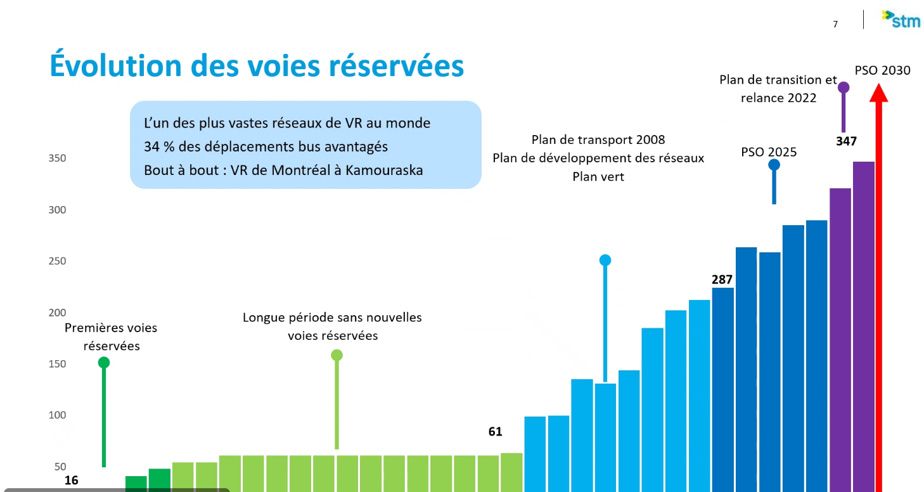
PHOTO PROVIDED BY THE STM
According to its president, Éric Alan Caldwell, “if we want public transport to progress in a city, we have to know how to give it its place”. “Our buses make 60,000 trips per day. […] When we enter the network, when we cross the door of a bus, we must feel that it is effective,” he said.
“When it comes to financing public transportation, you have always heard me say that we need more resources, but the burden is also on us. We have to do it as efficiently as possible,” persisted Mr. Caldwell.
While he recognizes that the consequences of reserved lanes are considerable for certain users, he calls on Montrealers to think bigger. “Yes, there are impacts, whether it is recovery of a traffic lane, parking spaces removed, but it is important to see the benefits which are notable and fundamental. That’s why we continue to do it,” concluded Mr. Caldwell.

